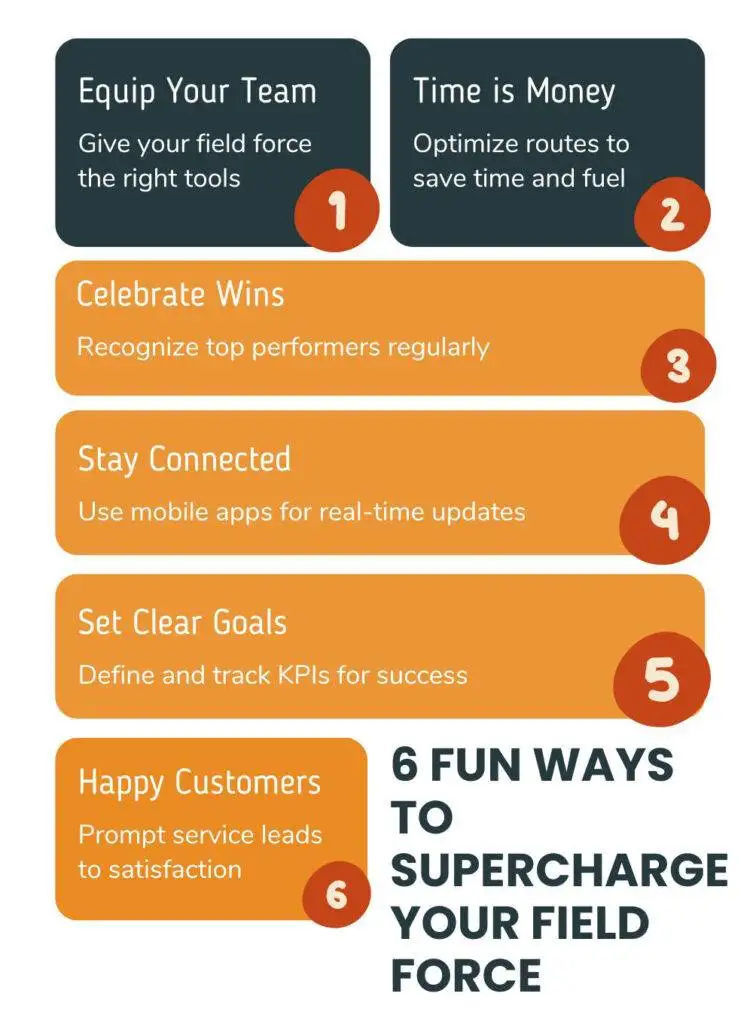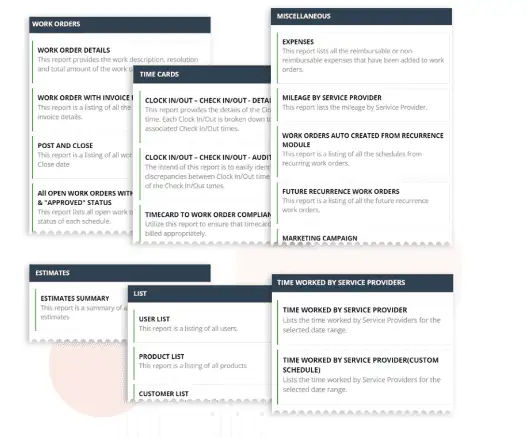Tips to Optimize Your Field Force Management: Best Practices in the Industry

Want to make your field force management awesome? We’ve got cool tips to help your field force manager become a total pro! A big computer repair company tried out some new Field force management tools for their orders. It was like magic! They cut the time to process orders by 50%, made way fewer mistakes, and their team got a lot more done. Pretty neat, huh?
What's the Deal with Field Force Management?

Field force management is all about coordinating and overseeing employees who work outside a traditional office setting. This includes managing scheduling, dispatching, performance, and communication for technicians, sales reps, and service agents. But what is a field force exactly? It’s your team of employees who perform their duties at client locations or in the field. Managing this workforce effectively requires tools and strategies tailored to the unique challenges of remote work. Effective field force management ensures that tasks are completed efficiently and on time, ultimately improving service delivery and customer satisfaction. It’s a critical aspect of businesses that rely on mobile workforces.
Key Components of Effective Field Force Management
To level up your field force operation management game, focus on these areas:
- Real-Time Tracking: Know where your team is and what they’re up to. It’s not about being nosy – it’s about being smart!
- Smart Scheduling: Let software handle the complexity of who goes where and when. Your team will thank you.
- Clear Communication: Keep everyone in the loop. No more “I didn’t get the memo” excuses!
- Performance Monitoring: Track key metrics to ensure your field force is operating at peak efficiency.
- Resource Allocation: Ensure your team has the right tools and information at their fingertips.

Field Force Management Software: Your New Best Friend
Field force management software is like having a super-smart assistant. Here’s what it can do:
- Show you where your team is in real-time
- Intelligently assign tasks to the right people
- Give your team mobile access to everything they need
- Generate reports and analytics for better decision-making
- Integrate with other business systems for seamless operations
Using this software can seriously boost your efficiency and customer satisfaction. Win-win!
Choosing the Right Field Force Management System
When shopping for a field force management system, look for:
- Mobile-friendly features
- Insightful reports and analytics
- Integration capabilities with your other business tools
- Scalability to grow with your business
- User-friendly interface
- Strong customer support
To select the right system, evaluate different options based on these features, along with ease of use and cost. Consider systems that offer customizable solutions to fit your specific needs. Remember, the right field force management system can transform your operations, so choose wisely!
Common Field Force Challenges (And How to Fix Them)
Even the best field force managers hit some bumps. Here are the usual suspects and their solutions:
- Scheduling mix-ups
- Solution: Use smart scheduling tools that consider factors like skills, location, and availability.
- Communication breakdowns
- Solution: Implement integrated communication platforms that work across devices.
- Performance tracking issues
- Solution: Utilize analytics and reporting features to monitor KPIs and identify areas for improvement.
- Resource management
- Solution: Use inventory management features to ensure your field force always has the right tools.
- Customer satisfaction
- Solution: Implement real-time updates and feedback systems to keep customers in the loop.
Be a Field Force Management Rock Star: Top Tips
Want to crush it in field force management? Try these strategies:
- Embrace tools for scheduling and dispatching
- Keep your plans flexible to accommodate changes
- Provide clear instructions to your field team
- Invest in regular training and support
- Foster a collaborative environment
- Use data to drive decision-making
- Regularly review and optimize your processes
Here’s some cool news: Companies using smart, data-driven sales methods are doing really well. They’re growing faster than others and seeing their profits jump by 15 to 25 percent. It’s like they found a great recipe for success!
Optimizing Field Technician Productivity
To boost your field technicians’ efficiency:
- Ensure they have detailed job instructions and necessary resources
- Offer ongoing training to enhance their skills
- Use mobile tools for real-time updates and communication
- Implement route optimization to reduce travel time
- Encourage knowledge sharing among team members
- Recognize and reward top performers
Remember, your field technicians are the face of your company. Empowering them leads to better customer satisfaction and business results.
The Future of Field Force Management
The future of field force management looks exciting with emerging technologies:
- Artificial Intelligence (AI) for smarter decision-making and predictive insights
- Internet of Things (IoT) for real-time data on equipment performance and field conditions
- Augmented Reality (AR) for remote assistance and training
- 5G networks for faster, more reliable communication
- Blockchain for secure, transparent record-keeping
To stay ahead:
- Keep an eye on new technologies
- Be open to adopting innovative solutions
- Stay informed about industry trends
- Involve your team in the digital transformation process
The field force manager of tomorrow will need to be tech-savvy and adaptable to leverage these innovations effectively.
Guess what? More and more businesses are going digital, and they’re getting pretty smart about it. In fact, 64% of B2B companies are planning to put more money into something called predictive analytics. It’s like they’re buying a crystal ball for their business! This tool helps them guess what might happen next, so they can make better plans
Success Stories: Field Force Management Wins
Let’s look at some field force management success stories:
- BMF Electric Inc: Boosted scheduling efficiency by 30% using scheduling and dispatching tools
- Scarsdale Security: Increased field technician productivity by 25% with mobile access
- Reliant Property Services Group: Improved customer satisfaction rates by 40% through real-time updates
- BrewTech Services: Reduced fuel costs by 25% by optimizing route planning
These stories show that the right tools and strategies can lead to significant improvements in efficiency, service delivery, and customer satisfaction.
Field Promax: Your Go-To Tool for Field Force Management

Here is how Field Promax field force management tool can help:
- User-Friendly Scheduling: Drag and Drop calendar interface makes it easy to assign jobs and manage technician schedules.
- Mobile Access: Technicians can view job details and update statuses from their smartphones.
- QuickBooks Integration: Seamlessly sync your financial data with QuickBooks for accurate accounting.
- Customer Management: Keep customer information and job histories safely stored and easily accessible.
- Customizable Reporting: Generate reports on job completion, technician productivity, and more.

Something Unique? It’s got some clever tricks up its sleeve:
- The “Oops” Button: Accidentally closed a job? No worries. Our one-click restore feature brings it back. It’s like a time machine for your work orders!
- Custom Price Lists: Set different prices for your VIP customers. Because sometimes, not all clients are created equal.
- The Quiet Scheduler: Assign jobs without notifying techs instantly. Perfect for planning ahead without waking up the whole crew at midnight.
- Job Code Wizard: Create custom codes for your unique services. Whether you’re installing dog doors or fixing Mars rovers, we’ve got you covered.
Conclusion: Field Force Management for the Win!
Mastering field force management is key to running an efficient operation and keeping customers happy. Focus on the core components we’ve discussed, tackle challenges head-on, and implement best practices.
Remember, tools like Field Promax are here to make your life easier with their field force management solutions. It’s time to level up your field operations and stay ahead of the competition!
Take a good look at your current practices, explore new technologies, and invest in the right tools. Your field force management strategy – and your bottom line – will thank you.